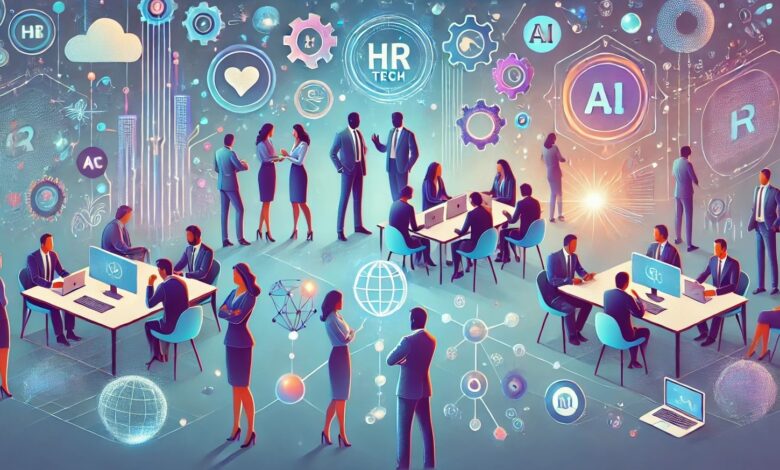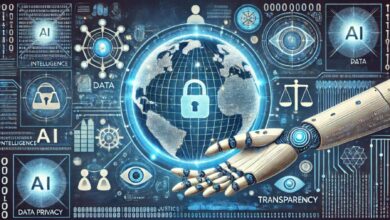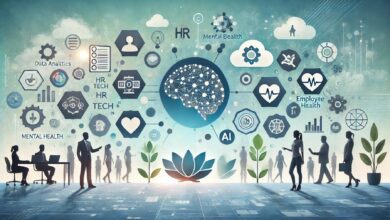
Visualise – You enter a workplace where every individual is valued, diversity is celebrated, and staff from all walks of life feel empowered to contribute their best ideas. An office where innovation flourishes because of differences and not in spite of them. Even though it sounds like a utopia, it is attainable, and the key lies in something you might not instantly think of—HR technology.
In the present day, Diversity, Equity, and Inclusion (DEI) initiatives are not regarded as just ‘good-to-have’ programs; they are essential to an organization’s success. However, old-style methods to DEI can fall short in delivering material, permanent change. Arrive HR technology.
From dealing with unconscious bias to empowering personnel through learning and development, HR tech is transforming how organizations approach DEI. Let us deep dive into how this apparently simple tool is redesigning the workplace in unanticipated ways.
Prejudice – Meet your Competition: How AI is handling Unconscious Bias
You must have you heard about unconscious bias—the deep-seated, often invisible assumptions we make about others based on their age, gender, caste, race, religion or upbringing. Even though it is a subtle force but, it has a deep impact on talent acquisition (TA), promotions, transfers, and even on mundane interactions in the workplace. The TA processes are often laced with unconscious biases leading to lost opportunities for recruiting underrepresented talent or for elevating diverse leaders.
AI HR tools can now assist us move past our prejudices. Visualize submitting resumes where personal particulars like names, snaps, or even addresses are kept anonymous. Hiring managers are appraising candidates solely on their skills, qualifications, and experiences. The unintended unconscious bias is eliminated by removing personal identifiers. This results in a fair TA process allowing recruitment of diverse talent.
AI driven performance appraisals and elevations have changed the game in curbing bias in these crucial processes. Progression based on merit only is the way forward.
Data: Your Secret Tool for an Inclusive Workforce
Without measurement, there is no management. For DEI, data is the best bet for organisations. Conventionally, DEI initiatives were led by anecdotal evidence or intuition. With the advancements in HR technology, organisations can now gather and analyse hardcore data on their staff structure, giving them a clear sight of their DEI stance.
Think about having dashboards at your command that track the age, gender, caste, race, religion or ethnicity breakdown of your staff. Human Capital Management (HCM) tools like Oracle and Visier make it easier to configure and analyse this data, finding gaps in diversity and indicating where inclusion efforts are substandard.
Such insights enable HR crews to fix material, measurable goals for their DEI initiatives. In case an organization perceives that leadership is largely vested in a particular demographic group, it can lead change management programs to develop and promote diverse talent.
Cutting-edge analytics tools can help organisations track the inclusivity of their culture. Do certain groups exit at higher rates than others? What is the engagement level among minority staff? Data can spotlight these blind spots, giving organizations the tools to make corrections.
From Job Descriptions to Talent Acquisition practices: Breaking down barriers with Tech
The language in your Job Description (JD) could discourage candidates from applying to your job. Not realizing it, companies sometimes use gender-biased language that inadvertently discourages diverse applicants. Enter HR technology and the game changes.
Natural Language Processing (NLP) tools can assist companies scan job postings for biased language. They can suggest changes and draft JDs that may appeal to a wider, more varied talent pool.
Further, AI software can analyse talent acquisition trends and recommend marginalised applicants who may have been ignored in the conventional recruiting process. The new call for organisations – hire not just for diversity but, recruit the best people by reaching out to untapped talent.
NLP tools enable organisations to shift from reactive talent acquisition procedures to meet diversity quotas to proactive considerate approaches that prioritize inclusivity.
Establishing affiliation: Transforming Work Culture through Employee Resource Groups
The role of Employee Resource Groups (ERGs) in ensuring that all employees feel included and supported is pivotal. ERGs are the groups within organizations that advocate and push for the hiring of employees from marginalised backgrounds. They assist them steer their careers and feel a sense of affiliation. However, these groups may struggle to make an impact without the right sponsors.
HCM platforms assist ERGs to communicate with the marginalised, plan events, and share resources, enabling them to flourish and drive real change within the organization. Through HR tech, ERGs are able to stay connected and drive inclusion initiatives. Whether co-ordinating a global mentorship programme on women’s leadership or a virtual networking event for the LGBTQ+ employees.
Now, HCM platforms offer real-time tools to promote inclusion across all levels of the organization. Training programs through virtual reality immersion can create real world scenarios where employees can experience the challenges and discrimination faced by the marginalised.
This kind of empathy-building technology can transform a company’s culture from the inside out, promoting deeper understanding and stronger connections between employees.
What is Next for HR Tech and DEI?
What is next on the horizon?
As HR tech continue to evolve, its impact on DEI is set to grow exponentially. Think about AI algorithms that can spot bias during performance reviews in real-time, alerting managers to potentially skewed evaluations.
Then, visualise predictive analytics that can forecast the diversity makeup of your workforce in the near future. This would empower organisations to plan and implement strategic initiatives in real time.
HCM powered with sophisticated data analytics will not only help organisations maintain DEI progress but accelerate it in the near future.
Organisations that invest in these pioneering tools now will be ahead of the curve, not just meeting DEI goals but setting new standards for equity and inclusion across industries.
HR tech is the great tsunami that has taken DEI by storm. HR tools are leveraging AI to fight unconscious bias, using data analytics for decision-making and fostering affiliation and understanding, HR tech helps organizations move beyond surface-level diversity efforts to create deeply inclusive cultures where everyone can thrive.
As tech continues to advance, its part in transforming DEI initiatives will only grow sturdier, making it a crucial asset for any forward-thinking organisation. The future of HR is now, and it’s as diverse, equitable, and inclusive as the people it serves.










